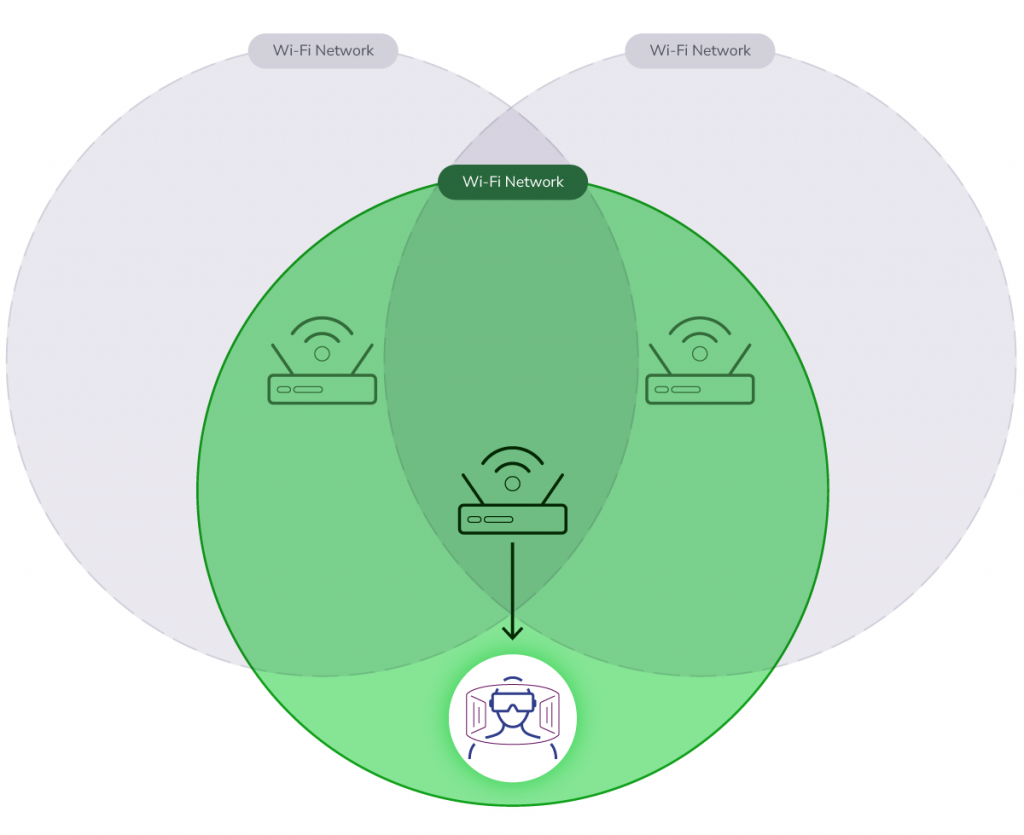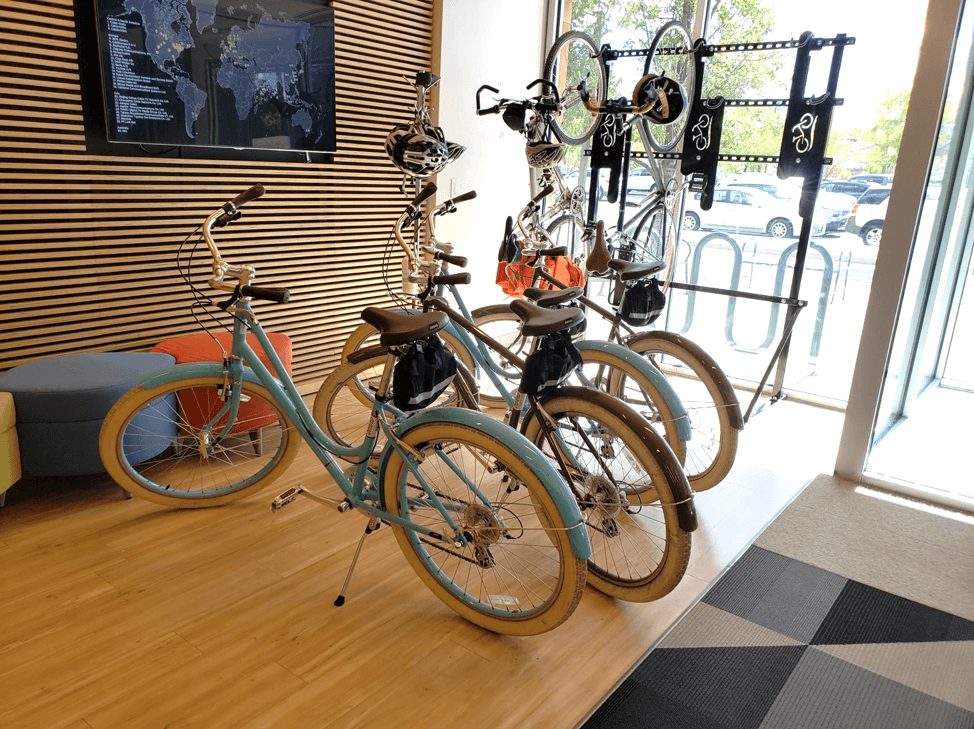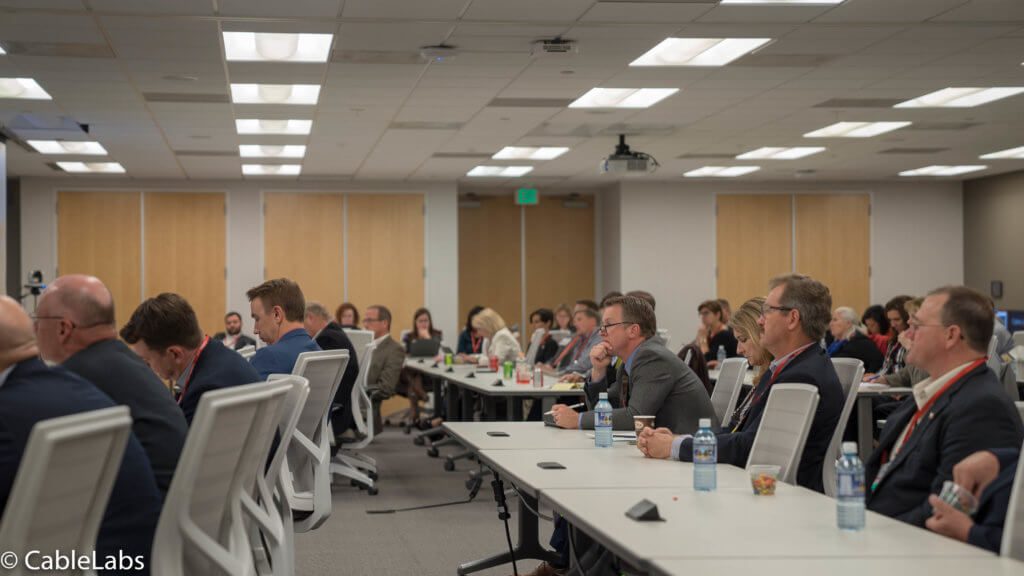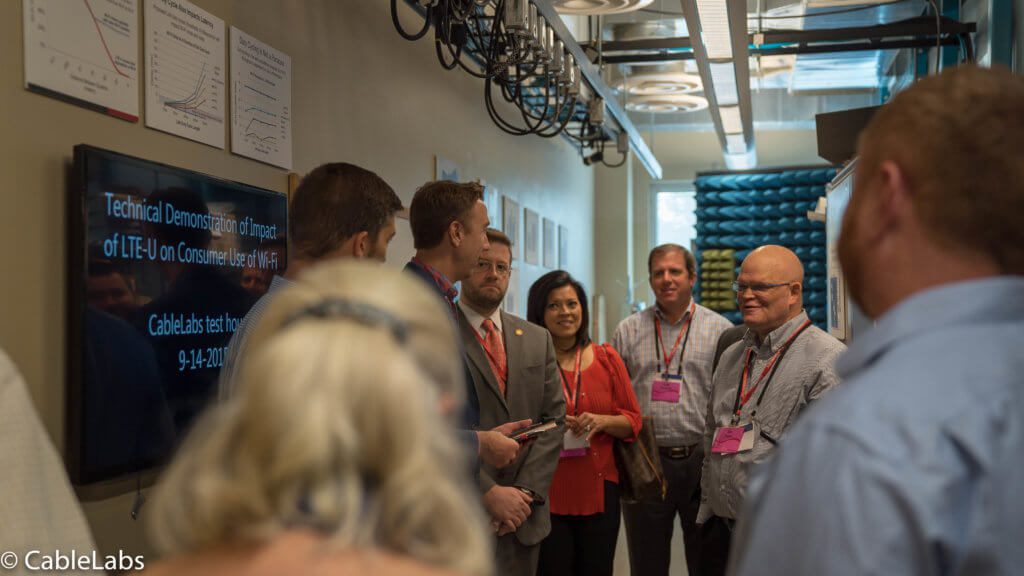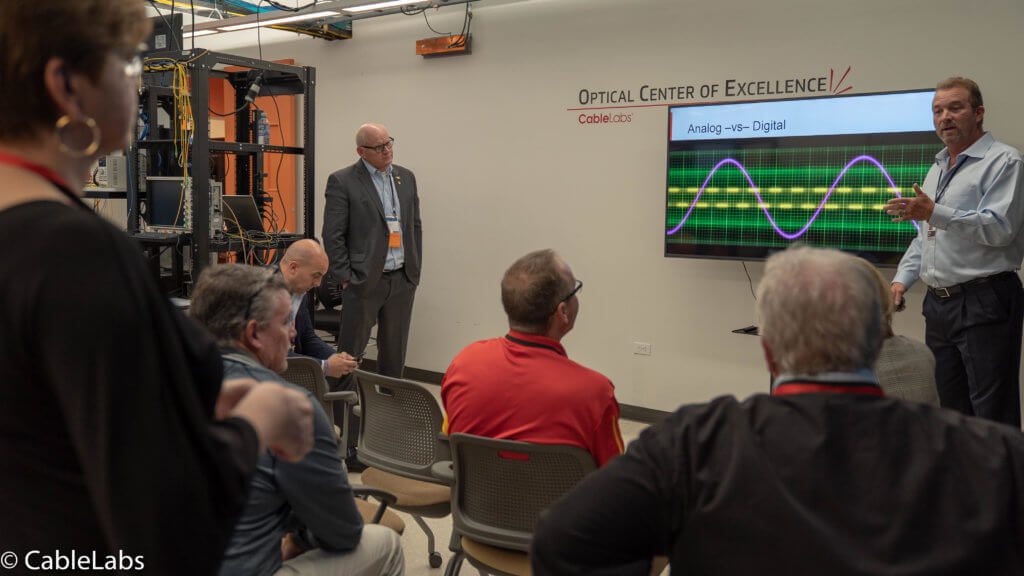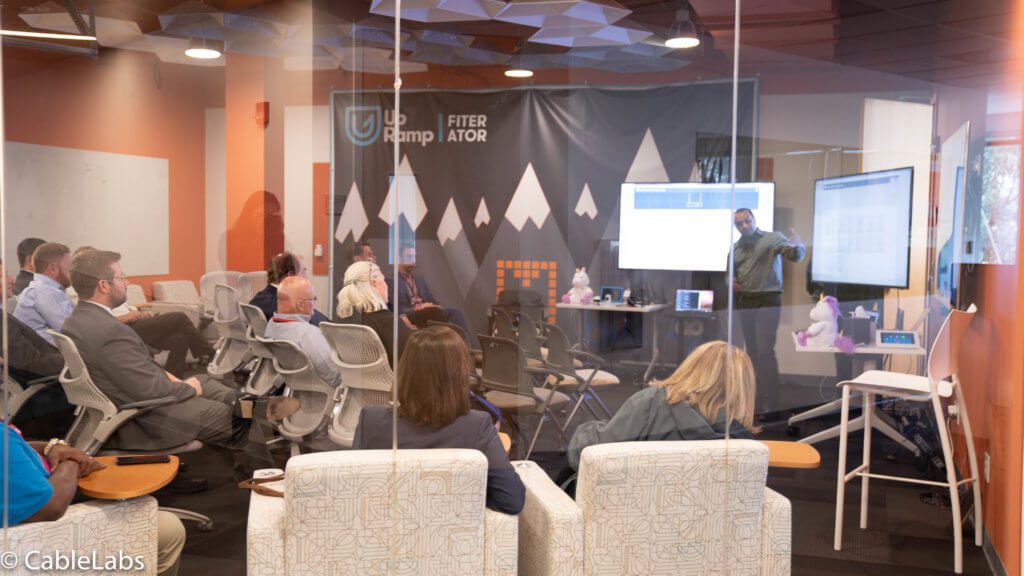Policy
The Near Future Requires Additional Unlicensed Spectrum
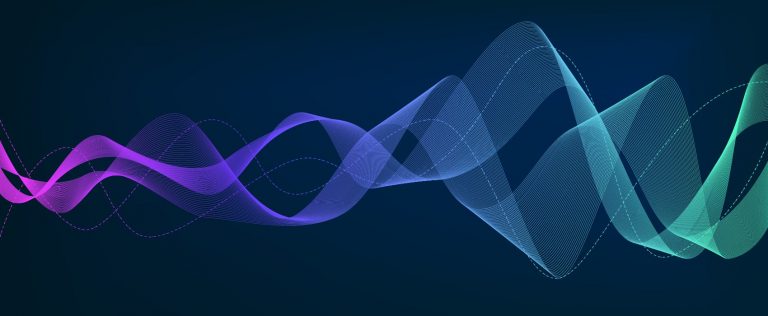
Key Points
- Wi-Fi is and will remain the workhorse of consumer connectivity.
- Wi-Fi spectrum exhaust is expected to be first seen in densely populated environments due to the continued growth in connected devices and increasingly data-intensive and latency-sensitive applications.
- Additional unlicensed Wi-Fi spectrum will be critical to the continued innovation in next-generation devices and applications in education, health care and entertainment.
As we dive into a new year, new administration and new Congress, one thing remains the same: we will need more spectrum to power our increasingly data-centric lives. Almost everything we do today is online — from working, learning, accessing health care and buying groceries to streaming content. Our everyday activities rely on the exchange or consumption of data. As discussed in our prior blog, “The Case for Additional Unlicensed Spectrum,” we see that case only growing stronger every day.
Traditionally, policymakers, including the Federal Communications Commission (FCC), focused spectrum decisions around coverage, to make sure that consumers across the United States could access communications and the internet. Now that almost all of the country is covered by communications and internet services, we need to shift our priorities to focus on meeting consumers’ and the industry’s capacity and performance needs. A helpful starting point is to look at how people and businesses are consuming data now and where technology is driving more demand.
The workhorse of connectivity, Wi-Fi carries more than 90 percent of all consumer internet traffic. Looking at just mobile devices and the nation’s largest wireless providers, Open Signal found that for every one bit carried on a mobile network, nearly 9 bits are carried on Wi-Fi. Wireless providers and their networks fundamentally rely on Wi-Fi to manage their capacity and traffic because the majority of smartphone usage occurs at home, where they are predominantly connected to Wi-Fi. The overwhelming reliance on Wi-Fi is expected to continue for the foreseeable future.
The Economic Impact of Surging Wi-Fi Demand
Unsurprisingly, given the heavy consumer reliance on Wi-Fi, another recent study found that the annual U.S. economic value of Wi-Fi is expected to grow from $1.6 trillion in 2024 to $2.4 trillion by 2027, including an estimated $514 billion in consumer benefit, $624 billion in producer surplus and $1.29 billion in GDP contribution. The same study found that the FCC’s April 2020 decision to open additional unlicensed spectrum to support Wi-Fi growth (in the 6 GHz spectrum band) generated $870 billion in economic value, just from 2023-2024, and that number is expected to increase to $1.2 trillion by 2027.
The annual CES in Las Vegas always provides a preview of our increasingly connected world — from wider adoption of health care applications to richer and more immersive entertainment to new smart home applications. One primary enabler for all these applications is the ubiquitous, plentiful and inexpensive wireless connectivity provided through Wi-Fi.
Not only will these innovations add more devices and applications to the already significant load on Wi-Fi frequencies, but they will also be increasingly data intensive. The new devices and applications will increasingly require higher speeds and lower latencies to work. A recent ABI Research report projects that current-standard (6 GHz-supported) Wi-Fi devices will grow from 95 million in 2024 to 367 million in 2029 — an increase of 288 percent in just five years — in North America alone.
That’s why the Wi-Fi industry has already developed a new Wi-Fi standard that will use wider-bandwidth channels to support these types of applications and more efficiently use available unlicensed spectrum. The catch is that they need more contiguous unlicensed spectrum bands to make enough wide channels to keep pace with consumer needs and technology advances.
How We Can Evolve With Growing Demands
Without more unlicensed spectrum, Wi-Fi performance will degrade as more devices, applications and users come online. Diminished performance is expected first in areas like dense commercial and residential areas, such as universities, apartments and office buildings that host high concentrations of users and devices. As the number of devices grows and more data-intense applications become widely adopted, Wi-Fi demand will continue to grow across the country.
The expected Wi-Fi spectrum exhaustion in densely populated environments creates a problem, as roughly a third of Americans live in apartments, condos, connected townhomes or other multi-family buildings, and even more people work in office buildings with more than one tenant. Wi-Fi exhaust could start to appear within a small space, or even a block, where multiple Wi-Fi networks are operating. These networks could be supporting multiple devices per household or office and multiple users, all sharing the same unlicensed frequencies.
Initially, degraded Wi-Fi performance will occur at peak usage times. As more devices, users and more data-intensive applications — such as telemedicine and augmented reality/virtual reality (AR/VR) — start to compete for the same channels, that degraded performance will extend for more time and more broadly to more locations.
More unlicensed spectrum is the key to averting this looming problem.
Fortunately, policymakers already have a successful model to follow — the FCC’s 2020 decision to make the U.S. the first country in the world to open the 6 GHz band to unlicensed commercial use by sharing with incumbent licensees, including public safety, utility and broadcast links. Other governments around the world are following the United States’ leadership, given the significant economic and technological success.
Thanks to the U.S.’s leadership and forward-thinking, American consumers are the first to experience better, faster and more reliable Wi-Fi service almost everywhere they go. But technology will not stop advancing, and consumers will only expect better connectivity. Given the astounding growth and demand for Wi-Fi, the U.S. must again lead the way to create room for continued unlicensed innovation, establish a foothold in the Wi-Fi and unlicensed global technology markets, and model how other allied countries can create economic value, expansive access and innovation.
Below, we outline some of the technical considerations as we look more closely at the looming Wi-Fi spectrum exhaustion issue.
Unlicensed Spectrum Efficiencies Across Dimensions of Frequency, Time and Geography
Wi-Fi and other unlicensed technologies are highly efficient stewards of limited spectrum, designed to maximize the utility of every MHz of available spectrum. This enables unlicensed technologies to support a wide variety and intensity of devices, applications and use cases. Wi-Fi’s efficient use of spectrum is built on low-power use — minimizing (but not eliminating) geographic overlap of uncoordinated networks, equitable time-sharing through “listen before talk” or similar contention-management techniques, and the support for the full channelization of all available unlicensed frequencies.
- Geography: Most notably, the FCC’s 6GHz rules constrain the transmission powers of both access points and clients, limiting the coverage area of these Wi-Fi networks, therefore reducing the number of geographically overlapping networks in an area.
- Time: Wi-Fi and other similar unlicensed technologies incorporate contention-management techniques that enable geographically overlapping Wi-Fi networks to use the same (or partially overlapping) frequencies. Networks then equitably share those frequencies in time between the two or more overlapping networks.
Figure 1: In general, when there are physically overlapping Wi-Fi networks on the same channel, only one network can access that channel at a time.
- Frequency: The 6 GHz band provides seven non-overlapping 160 MHz channels or three nonoverlapping 320 MHz channels. This has enabled geographically overlapping networks, like those in neighboring apartments, to reduce but not eliminate frequency overlap increasing available capacity to each Wi-Fi network.
Figure 2: Current Wi-Fi channelization of the 6 GHz band and potential future Wi-Fi channelization of the 7/8 GHz band. (Click image to enlarge.)
Through the dimensions of geography, time and frequency, Wi-Fi provides an incredible amount of data-carrying capacity, but it isn’t inexhaustible.
As we look to the future, these techniques, as well as further advances in Wi-Fi technology, are unlikely to meet growing demand from the devices and applications that rely on Wi-Fi — without additional unlicensed spectrum.
With additional unlicensed spectrum, however, Wi-Fi would have access to additional channels, further reducing conflict and performance degradation in networks that are close to each other and increase the instantaneous bandwidth and throughput available to applications. This would further reduce the likelihood of collisions in time.
Growing Demands Will Strain Available Unlicensed Spectrum
The explosion in the number of connected devices and the increased throughput, latency and performance demands of existing and new applications will exceed the available and future Wi-Fi capacity from currently available spectrum. As ABI Research explains, by the end of the decade, most households will have 6 GHz-capable Wi-Fi 7 access points, and we’ll begin to see the transition to Wi-Fi 8 access points.
- Total Number of Connected Devices: In 2024, the average household had 18 connected devices, but as more devices add Wi-Fi connections, such as appliances and lightbulbs, we regularly see households with 40, 50, 75 or more. ABI Research forecasts that the number of connected devices will continue to grow, with total annual shipments of Wi-Fi-connected devices to North America growing by 35.1 percent each year from 2023 through 2029. Although many of these devices are relatively low bandwidth (e.g., thermostats, lighting controls, appliances), each regularly transmits and receives data, increasing the probability of crowding and contention with other devices on the network. As the number of total connected devices increases, the amount of unused unlicensed spectrum in a home or business decreases. This will most negatively affect latency-sensitive applications, such as video conferencing and immersive, online gaming, which require ready access to uncongested spectrum.
- More Demanding Applications and Devices: The ceaseless march toward higher picture quality and the growing incorporation of AI capabilities will drive increased Wi-Fi traffic in the coming years. For instance, we see all the major streaming platforms moving toward some version of 4K Ultra HD, high dynamic range (HDR) formats (e.g., Dolby Vision and HDR10+). In parallel, smart television manufacturers are rapidly producing devices that support these more data-intensive formats. These new formats and future formats and associated devices will continue to drive and require increased bitrates. For instance, streaming a Dolby Vision video to a smart TV can easily have a bit rate of 25–30 Mbps. We expect even higher bitrates for video formats being streamed to AR/VR goggles as higher resolution and picture quality are key to these experiences. Moreover, we expect the widespread adoption of AI capabilities by device manufacturers and consumers to further drive Wi-Fi traffic, including from increased upstream video and telemetry data for AI processing in the cloud, and increased frequency and size of software updates to support locally deployed AI models.
- New Client-to-Client Connections: To further enhance the utility of 6 GHz, the FCC recently enabled very low power (VLP) unlicensed devices to use the band. With much lower power levels, VLP connections are very short range. The primary use cases for VLP include wearables, such as watches, rings and earbuds, and other short-range use cases such as connectivity between AR/VR goggles and a TV or between a gaming controller and console. What sets many of these connections apart is that the same bit will make multiple wireless hops in the home before it reaches the Wi-Fi access point and the broader internet, driving substantially more demand for unlicensed spectrum capacity.
We anticipate that the growth and increasingly intense and demanding use of Wi-Fi will first lead to unlicensed spectrum exhaust and degraded performance in the most dense environments, like apartments, condos, schools, and office buildings, before manifesting in less dense environments.
Open Additional Unlicensed Spectrum!
To enable the connection-rich near future for all end users, the U.S. government (and governments around the world) must identify additional unlicensed spectrum. Today’s growing number of Wi-Fi devices, and the next generation of devices, that support applications in education, health care and entertainment all fundamentally rely on ubiquitous, plentiful and inexpensive wireless connectivity that Wi-Fi and other unlicensed technologies provide.
Without additional unlicensed spectrum, the flow of transformative technology and applications will begin to slow down. CableLabs looks forward to continuing to work with policymakers and the broader industry to help open additional unlicensed spectrum.
Policy
The Case for Additional Unlicensed Spectrum
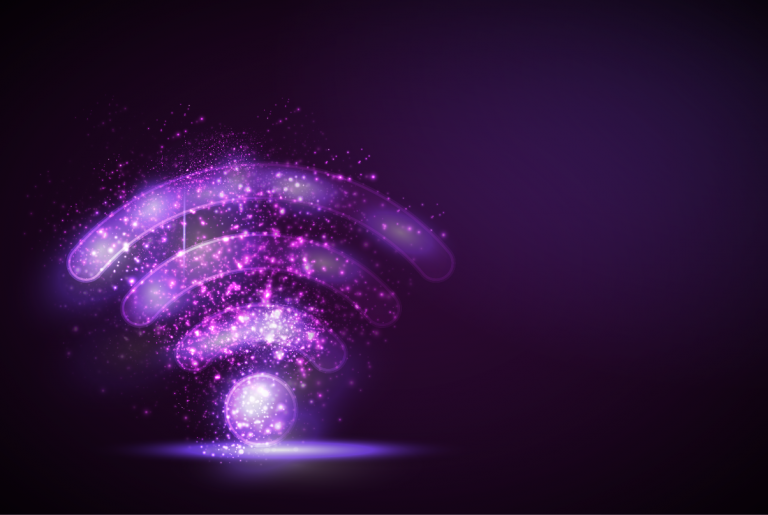
Key Points
- Wi-Fi provides internet connectivity for the vast majority of devices and applications, in terms of both the number of connections and total data carried.
- To keep pace with performance increases of internet services and with the growing performance demands of critical devices and applications, U.S. and global governments must continue to allocate additional unlicensed spectrum toward the advancement of Wi-Fi performance.
Today and for the foreseeable future, Wi-Fi is the technology most devices and applications use to connect to the internet. As technology advances, those devices and applications will require more data to deliver high-quality experiences for increasingly immersive, compute-intensive applications. To further support the emergence of high-fidelity video conferencing, cloud gaming, virtual reality (VR)/augmented reality (AR) and other immersive applications, widespread availability of 10 gigabit and 25 gigabit internet services is just over the horizon.
The real-time nature of these cutting-edge applications will require even faster and higher-performing Wi-Fi, with greater throughput, lower latency and better reliability. Also, because consumers primarily rely on Wi-Fi to connect to the internet — demonstrated by 10 times the amount of data going over Wi-Fi compared with mobile networks and the roughly 80 percent of data from mobile devices going over Wi-Fi — consumers now expect wall-to-wall Wi-Fi coverage in their homes, businesses and wherever they are (e.g., airports, coffee shops, civic centers). More unlicensed spectrum is key to ensuring that Wi-Fi performance keeps pace with consumer expectations and needs.
Identifying and allocating additional unlicensed spectrum for Wi-Fi is critical to ensuring the ready distribution of increasingly capable internet services throughout the home and enterprise. Such efforts will enable the increased performance of today’s and tomorrow’s critical applications in terms of coverage, throughput, latency and reliability, and will support new Wi-Fi features and functionality. In opening the 6 GHz band to Wi-Fi and other unlicensed use in 2020, the FCC took a necessary step toward enhancing the performance and capabilities of Wi-Fi and ensuring the future growth of broadband. However, opening 6 GHz isn’t a one-and-done solution. Additional unlicensed spectrum is needed to enable continued Wi-Fi performance enhancements to stay ahead of both the increasing performance of broadband networks and the growing performance requirements of devices and applications.
Background
Since its inception, Wi-Fi has been designed to use spectrum efficiently and to co-exist with other spectrum users. Wi-Fi uses a contention-based protocol and seeks to transmit data opportunistically in short bursts, when the frequency channel is available, enabling coexistence with other users. Moreover, Wi-Fi devices use a half-duplex access protocol (transmitting and receiving on the same channel) to further economize on available frequency channels.
In 1997, IEEE released the first 802.11 standard, which is the basis for Wi-Fi. From that humble beginning, we’ve seen the adoption of Wi-Fi explode. Today, there are more than 21 billion Wi-Fi devices in use globally. Initially, Wi-Fi used the 2.4 GHz band and provided a data rate of up to 2 Mbps. Over time, Wi-Fi devices began using the 5 GHz band and larger channel sizes to drive increased data rates. With Wi-Fi 6E and the incorporation of channel sizes up to 160 MHz, Wi-Fi devices can support data rates over 1 Gbps.
With the opening of the 6 GHz band (5.925–7.125 GHz), the FCC enabled for the first time 320-MHz Wi-Fi channels. Doing so required the FCC to craft an innovative three-part sharing framework to enable coexistence with the incumbent licensees:
- Low Power Indoor (LPI) requires the use of a contention-based protocol, permits only indoor access points (APs), restricts those APs to a power spectral density limit of 5 dBm/MHz and total power limit of 30 dBm EIRP on a 320-MHz channel, and is available across the entire 6 GHz band.
- Standard Power, enabled by Automated Frequency Coordination (AFC), allows outdoor access points and higher power, up to 36 dBm EIRP (or 23 dBm/MHz on 20 MHz channel), when under the control of an AFC system, and is only available in the UNII-5 (5.925–6.425 GHz) and UNII-7 (6.525–6.875 GHz) portions of the band.
- Very Low Power (VLP) requires the use of a contention-based protocol and enables indoor and outdoor operations at an even lower power limit of -5 dBm/MHz and is only available in the UNII-5 and UNII-7 portions of the band.
The Wi-Fi Alliance officially released Wi-Fi 7 on January 8, 2024. With the available 320 MHz channels in 6 GHz, Wi-Fi can now deliver speeds over 10 Gbps (using four MIMO streams), helping to ensure that Wi-Fi keeps pace with advances in internet service speeds and increasing application requirements.
Driving the Need for Additional Unlicensed Spectrum
U.S. and other governments must continue to allocate additional spectrum for unlicensed use not only to keep pace with the growing demand for Wi-Fi and other unlicensed technologies but also to remain ahead of the technology curve. Allocating additional unlicensed spectrum will fully enable and maximize the benefits of emerging applications and functionality, which will translate to an expected $5 trillion in annual global economic value by 2025. The drivers of necessary additional unlicensed spectrum are discussed below.
Increasingly capable broadband services and growing consumer demand for more connected devices, higher throughput, lower latency and increased reliability. History has made clear that total data usage and bandwidth requirements will only grow in coming years and most of that data will be carried over Wi-Fi, as noted above. This growth will be enabled by the ubiquitous availability of increasingly capable broadband services: 10 gigabit and beyond (e.g., DOCSIS 4.0, 10G-EPON, XGS-PON, 25G-PON). To this end, the U.S. government is investing well over $40 billion to deploy highly capable fiber-based networks. Data and bandwidth usage growth will also be driven by more connected devices and increased use of real-time and data-intensive applications such as new interactive VR/AR experiences. We’ve seen the average number of connected devices per home grow from 13 in 2021 to 17 in Q3 2023 — an increase of over 30 percent in less than two years and a trend we expect to continue. We also continue to see average fixed broadband residential data usage increase — currently, on average, over 640 GB per month. Moreover, the COVID-19 pandemic accelerated the adoption and use of video conferencing and other cloud-based tools. As the FCC has explained, “video conferencing has grown from a niche product to a central pillar of our communications infrastructure.” Because consumers no longer connect devices using an ethernet cable, but rather rely on Wi-Fi to connect to the internet, the government must also continue to make additional unlicensed spectrum available to ensure the government’s investment in broadband deployment actually reaches end-devices and enables the critical applications of today and tomorrow.
Supporting new features and functionality of Wi-Fi 7 and beyond. Additional unlicensed spectrum is also needed to make room for the coming features and functionality of Wi-Fi 7 and beyond. The release of Wi-Fi 7 introduced new features and functionality; of note, Wi-Fi 7 now includes support for 320 MHz channels and Multi-Link Operation (MLO). Both features enable higher throughput and lower latency through the use of wider channels and multiple channels — features not available in prior generations of Wi-Fi. Moreover, IEEE is already working on 802.11bn, the standard that will underpin Wi-Fi 8. The emerging focus is on Ultra High Reliability (UHR) where additional spectrum becomes even more critical to meet performance goals in light of potential channel contention from high-density client environments, adjacent Wi-Fi networks or other unlicensed use.
The technical limitations enabling the 6 GHz innovative sharing framework. The FCC’s innovative unlicensed sharing framework in 6 GHz is a huge success, protecting mission-critical incumbents and allowing for expanded Wi-Fi use at the same time. Moreover, this sharing framework eliminated the need to relocate incumbents, enabling the rapid realization of the benefits of this additional unlicensed spectrum to consumers and enterprise users alike.
To ensure safe coexistence, the FCC established a detailed unlicensed spectrum sharing framework, including Low Power Indoor-only (LPI) restrictions across the band and more recently Very Low Power (VLP) restrictions and database-controlled (by an AFC database) standard-power capabilities available in certain parts of the band, as detailed above. To accommodate these restrictions, Wi-Fi requires more bandwidth to deliver high speeds and employs more spectrum-intensive techniques, such as mesh networking, to achieve the needed coverage. For example, mesh networking requires additional overhead to backhaul and coordinate the mesh traffic, reducing the overall data-carrying capacity of the available channels. One approach to avoid mesh networking is to use a higher-power channel. However, under the current FCC rules, Wi-Fi can access, at most, only one standard-power 320 MHz wide channel through an AFC system.
Between the power limits and other regulatory restrictions placed on LPI and VLP operations and the limited availability of standard power channels under an AFC, the 1,200 MHz available for unlicensed use in the 6 GHz band is unable to provide the needed coverage, throughput, capacity and latency performance that will be expected and required by consumers and enterprise users in the near future. Additional unlicensed spectrum will allow consumers and enterprise users to more fully benefit from Wi-Fi 7’s new features, enabling better user experiences.
It’s Up to Government
Taking all these drivers into account and considering the value that unlicensed spectrum will continue to deliver to global economies, the United States and other governments around the world should waste no time identifying meaningful additional unlicensed spectrum, particularly given that any additional unlicensed spectrum will likely have similar regulatory technical limits as 6 GHz unlicensed use.

Policy
Driving Toward 10G and Beyond: CableLabs Engagement in Standards Organizations and Industry Consortia

CableLabs continues to engage heavily with—and to play a key leadership role across—a broad group of global information and communications technology standards development organizations (SDOs) and industry consortia. These engagements enable CableLabs to influence emerging technologies and leverage our technical expertise and global recognition as a leading industry innovation lab to provide meaningful contributions and help advance these technologies to drive toward 10G and beyond. CableLabs is directly involved in over 90 distinct working groups across a broad range of technologies, including wireless, optical, security, immersive media formats and many others.
Through focused engagements with these SDOs and industry consortia, CableLabs influences global information and communications markets to drive advancements aligned with CableLabs’ objectives in fixed and mobile convergence, cybersecurity and broadband innovation (collectively, 10G). Figure 1 shows the breadth of organizations that CableLabs participate in to drive the convergence of wireless and wired networks and develop the technology required to fully realize the 10G vision.
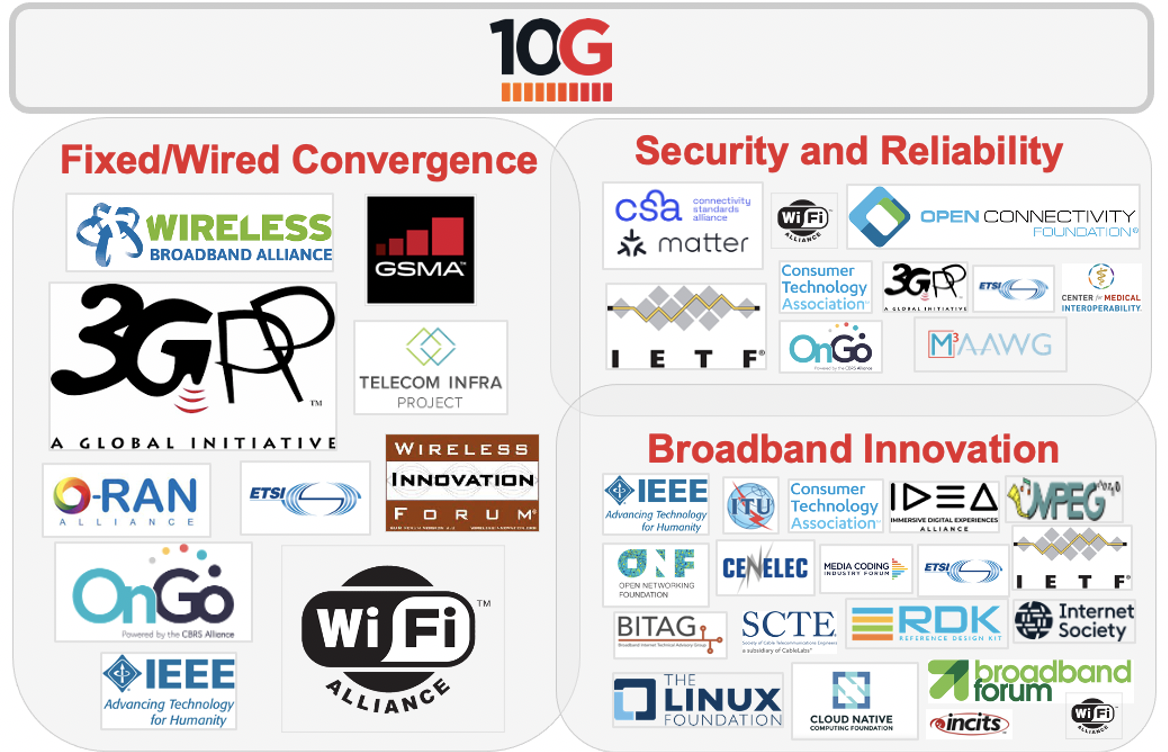
Figure 1. CableLabs’ Standards Organization Engagements June 2020 – 2021.
Driving Convergence of Fixed and Mobile Access Across Wired and Wireless Networks
CableLabs and the cable industry are driving toward a new era of true convergence of fixed and mobile services where connectivity can be provided dynamically and seamlessly across access network technologies (e.g., fiber, hybrid fiber-coaxial (HFC) networks, Wi-Fi, mobile, shared spectrum models, such as CBRS and fixed wireless). Convergence will enable optimized connectivity for a more user-centric experience, unleashing a new wave of innovation in services and applications for consumers. Given the nature of the challenge, convergence will only succeed through cross-industry collaboration and cooperation to develop and define the interoperability requirements and technologies required.
CableLabs is helping to create open interface specifications across its convergence-related standards engagements to promote a diverse and competitive marketplace of vendors and suppliers (e.g., the Telecom Infra Project (TIP) and the O-RAN Alliance). CableLabs is helping enable the use of commercial off-the-shelf hardware and virtualization technologies for fixed, mobile and converged network functions. These functions include using cloud-native infrastructure to enable flexibility, elasticity, resiliency and telemetry, promoting technologies for closed-loop automation, zero-touch provisioning and self-healing of converged infrastructure and driving harmonization across multiple industries (e.g., 3GPP, OnGo Alliance, Wi‑Fi Alliance (WFA) and WInnForum).
Accelerating Broadband Innovation
The 10G platform is a combination of technologies that will deliver symmetric multi-gigabit Internet speeds with a vision toward enabling symmetric 10 gigabits per second (Gbps) services. The 10G platform will not only provide broadband at speeds 10x faster than what most consumers currently experience but will also allow for significantly lower latencies across the network. Advances in both the access network and home or local area network are required for consumers to realize the full benefit of 10G.
CableLabs is not only heavily invested in direct development of many of the 10G enabling technologies, including next-generation DOCSIS technologies, it also engages across a broad range of SDOs and industry consortia to guide and contribute to network technologies that are critical to the cable industry and part of the broader communications industry —for example, advancing optical technologies (e.g., defining the 25G/50G-EPON standard at the Institute of Electrical and Electronics Engineers (IEEE)) and boosting Wi-Fi performance (e.g., driving operator-required functionality into the WFA EasyMesh specifications). CableLabs also engages in industry efforts to accelerate next-generation broadband application development, including immersive media (e.g., at the Immersive Digital Experience Alliance, MPEG-I and Media Coding-Industry Forum (MCIF)), work to drive improvements and new solutions in network virtualization and cloud computing (e.g., at the Cloud Native Computing Foundation, Linux Foundation and Open Networking Foundation) and to stimulate adjacent innovation to help ensure full utilization of cable’s future networks (e.g., at Internet Engineering Task Force (IETF)).
Increasing Security
The cable industry has a long history in leading advancements in network security, as recently evidenced by its approach to 10G, which incorporates security as a core element. To drive increased security, CableLabs participates in SDOs and industry consortia that cover network technologies, as well as technologies both upstream and downstream from cable broadband service.
Our work to increase security encompasses several major areas:
- Mobile and Fixed Network Security: Driving increased network security through 3GPP, WFA, WBA, European Telecommunications Standards Institute (ETSI) and IETF
- Internet of Things (IoT) Security: Building secure interoperability into IoT devices through our work with OCF, WFA and CSA Matter pioneering paths to new security capabilities such as integrating CableLabs® Micronets as one of the enabling technologies referenced in the National Cybersecurity Center of Excellence (NCCoE) lab’s research on the mitigation of network-based attacks using Manufacturer Usage Description (MUD) for IoT security
- Mitigating Threats to Broadband Service: Collaborating to develop approaches for improved Distributed Denial of Service (DDoS) mitigation through our work at M3AAWG monitoring IP-address spoofing prevention, routing security and advancing gateway device security
CableLabs engages across a dynamic field of SDOs and industry consortia to create the connectivity standards, protocols and best practices to bring the 10G vision to life. Through proactive collaboration and direct technical contributions in a broad group of organizations, CableLabs is pushing toward a more user-centric experience through driving network convergence, accelerating broadband innovation and advancing security throughout the network.

Policy
More Than 70 State Legislators Experience the Future of Connectivity at CableLabs
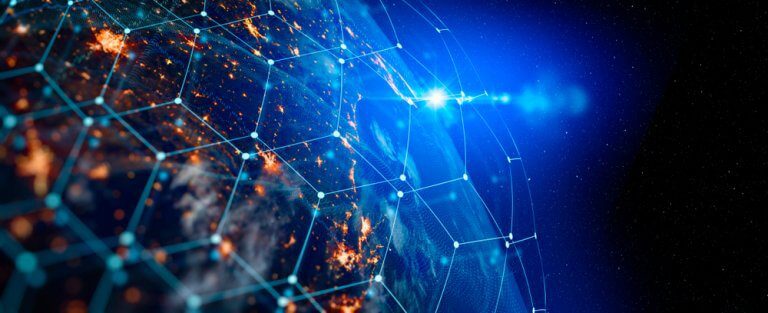
For the past several years, CableLabs has annually hosted a large group of state legislators from dozens of states across the country to discuss the future of broadband connectivity. It was our privilege to repeat that honor recently, both to showcase the cable industry’s innovation roadmap and to listen to the interests and concerns of a diverse group of lawmakers.
Policymakers were excited to see firsthand the emerging network technologies that will enable increased cable broadband performance—faster symmetrical speeds, lower latency, enhanced reliability and better security. Collectively, the group of network technologies that will enable this increased performance is the cable “10G Platform,” which will equip cable networks to deliver 10 gigabit services.
CableLabs’ Rob Alderfer, Vice President of Technology Policy, kicked off the visit with an overview of the current state of cable broadband networks and the technologies on the horizon that will drive increased broadband performance. Gigabit-speed service is now available to nearly the entire footprint of the cable network in the United States. Although gigabit service is state of the art today, CableLabs sees an even faster future for connectivity with symmetrical multigigabit speeds coming soon to consumers through the 10G Platform. To help envision this future, CableLabs also screened its latest Near Future Video—“The Near Future: Diverse Thinkers Wanted”—to illustrate the applications and services that could be enabled by widely deployed 10G networks, including holo-rooms, on-call mixed reality (MR) and autonomous taxi fleets, among many others.
The state legislators then took part in a tour of CableLabs, including a series of demonstrations and discussions in the areas of wired network technologies, wireless network technologies, cybersecurity and immersive media.
Wired Network Technologies (Fiber and Coaxial)
In CableLabs’ Optical Center of Excellence, Curtis Knittle, vice president of wired technologies, demonstrated multi-gigabit broadband service in action, with speeds of nearly 5 Gbps being received by a single cable modem using DOCSIS® 3.1 network equipment—a clear step toward 10G. Curtis also provided an overview of the emerging wired network technologies that underpin the 10G Platform, including advances in DOCSIS technology (DOCSIS 4.0), fiber optic access networks (Full Duplex Coherent Optics) and distributed access architectures (Remote PHY and Remote MAC/PHY). Collectively, these technologies will scale to deliver 10 Gbps.
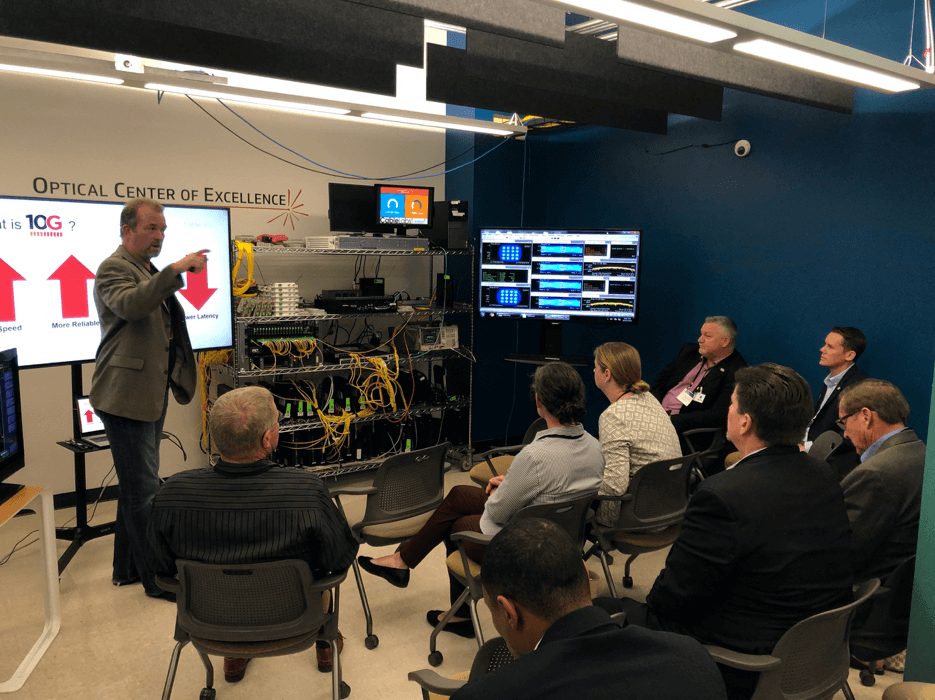
CableLabs’ Curtis Knittle demonstrates the future of broadband speeds over HFC and fiber optic networks to a group of state legislators.
Wireless Network Technologies (Wi-Fi, Mobile and Fixed)
CableLabs continues to grow its investment in wireless network technologies, recognizing that the consumer’s broadband experience depends on a robust wireless connection. Joey Padden, a distinguished technologist at CableLabs, provided a live demo of gigabit Wi-Fi. Robust wireless connectivity, through home Wi-Fi networks, is essential to the delivery and full enjoyment of the full capability of the current cable broadband service and the 10G service of the future.
Joey led a discussion of the underlying technologies and constraints to future growth, including how a shortage of wireless spectrum is a major bottleneck for delivering on industry innovation. Policymakers can play a key role in helping enable the market by making more spectrum available for new and existing technologies, such as Wi-Fi. Recognizing the importance of spectrum policy, CableLabs is an active technical contributor to these important decisions, which were of high interest to the visiting lawmakers.
Cybersecurity and the Internet of Things
The Internet of Things (IoT) has the potential to enhance all our lives through increased efficiency, convenience and productivity. However, this proliferation of Internet-connected devices also creates meaningful risk for consumers, online services and the broader Internet. Insecure IoT devices can fuel cyberattacks, spread ransomware and steal sensitive personal information, among other concerns.
The 10G Platform seeks to mitigate these risks through a number of new technologies, including CableLabs® Micronets. CableLabs’ Mark Walker, Director of Technology Policy, and Kyle Haefner, Senior Security Engineer, demonstrated how new tools such as Micronets will allow cable broadband customers to stay ahead of attackers. Protecting consumers has proven to be a priority we share with legislators. CableLabs and the cable industry are leveraging decades of experience and leadership to help address the challenges and risks that insecure IoT poses.
Immersive Media (VR, MR and Light Fields)
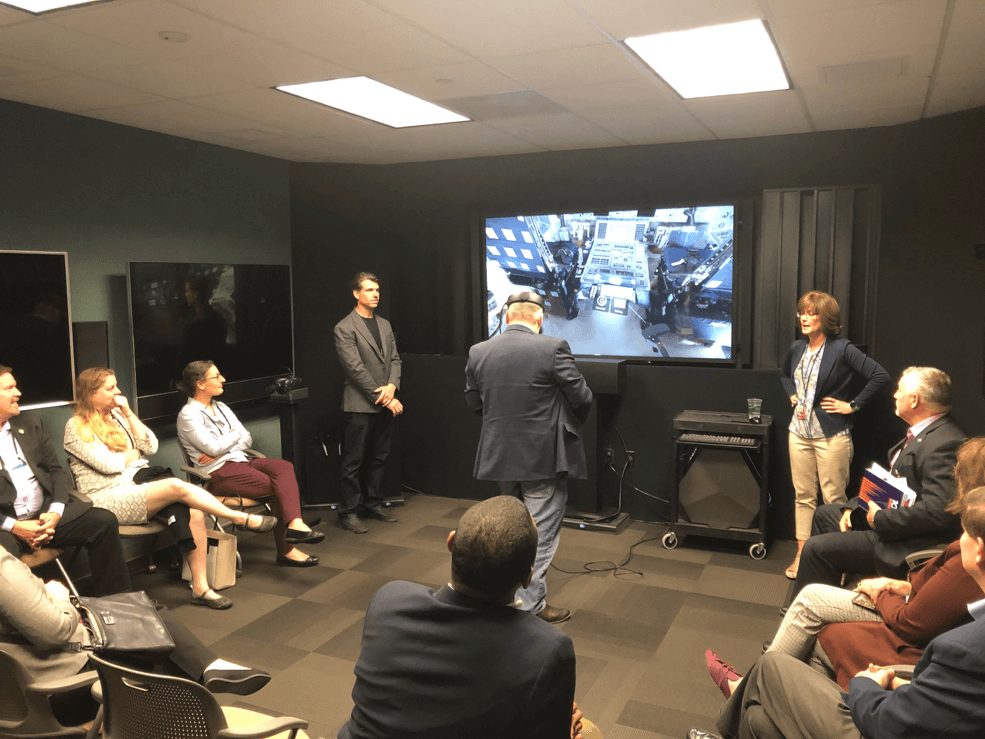
CableLabs’ Eric Klassen and Debbie Fitzgerald talk legislators through the future of immersive media experiences, while a visiting legislator explores the inside of a space shuttle cockpit through VR.
The tour also provided the legislators with the opportunity to experience the latest in virtual reality (VR) and discuss the near future of immersive media technologies, including on-call MR and holographic light field displays. CableLabs’ Eric Klassen, Innovation Project Engineer, and Debbie Fitzgerald, Director of Technology Policy, led the discussion and provided legislators with a sense of the applications that cable’s 10G broadband networks will enable. To support the development and adoption of immersive media, CableLabs helped found the Immersive Digital Experience Alliance (IDEA), which is standardizing a new media format for the transmission of volumetric media, such as light fields.
Following the lab tours, the event wrapped with a future-focused session on emerging technology megatrends with CableLabs’ CEO Phil McKinney. Phil provided an innovator’s perspective on key trends that will significantly impact technology development. For example, he highlighted exponential increases in storage capabilities (e.g., biological-based and memristor technologies), artificial intelligence, robotics and bandwidth. Phil explained how these technology megatrends will fundamentally change how we each live, learn, work and play.
As CableLabs continues to build the technologies that will make 10G networks a reality, we recognize the importance of dialogue with policymakers through events such as this. It is critical that government officials have a sound understanding of the industry’s innovation roadmap, and it is equally important that industry listen to public policy interests. Together, we can build the future of connectivity.

Policy
Driving Increased Security in All IoT Devices

CableLabs engages with the IoT industry and the broader stakeholder community, including governments, to help drive increased IoT device security. The rapid proliferation of IoT devices has the potential to transform and enrich our lives and to drive significant productivity gains in the broader economy. However, the lack of sufficient security in a meaningful number of these newly connected devices creates significant risk to consumers and to the basic functionality of the Internet. Insecure IoT devices often serve as building blocks for botnets and other distributed threats that in turn perform DDoS attacks, steal personal and sensitive data, send spam, propagate ransomware, and more generally, provide the attacker access to the compromised devices and their connections.
To help address the challenge of insecure IoT, CableLabs along with 19 other industry organizations came together to develop “The C2 Consensus on IoT Device Security Baseline Capabilities” released earlier this week. The broad industry consensus identifies cybersecurity baseline capabilities that all new IoT devices should have, as well additional capabilities that should be phased in over time. The development kicked off in March with a workshop hosted by the Consumer Technology Association (CTA). Over the past months, the group has coalesced around the identified cybersecurity capabilities. These include capabilities in the areas of device identity, secured access, data protection and patchability, among others.
CableLabs has also engaged with the National Institute of Standards and Technology (NIST) as it develops its recently released draft report, “Core Cybersecurity Feature Baseline for Securable IoT Devices: A Starting Point for IoT Device Manufacturers.” Both industry and governments largely agree on the capabilities that must be included to increase device security. Like the C2 Consensus, NIST focuses on foundational cybersecurity capabilities, including device identity, secure access, patchability of firmware and software, protection of device configuration and device data, and cybersecurity event logging.
The cybersecurity capabilities identified in the C2 Consensus and NIST will help prevent and minimize the potential for exploitation of IoT devices. Both documents provide a strong foundation and help point IoT manufacturers in the right direction on how to increase device security. However, cybersecurity is an ongoing journey, not a destination. Security practices must evolve and continue to improve to address new and emerging threats and changes in technology. This foundation must continue to be built on overtime.
CableLabs has long been a leader in the development of security technologies. For decades, CableLabs has helped guide the cable industry in incorporating many of the identified security capabilities into cable devices and has ensured the maintenance and advancement of these capabilities over time. For instance, since the first DOCSIS specification in 1997, CableLabs has helped ensure the protection of data: All traffic flows between each cable modem and the CMTS are encrypted to protect the confidentiality and integrity of those transmissions. This is not a once-and-done process; CableLabs has and must continue to advance the cryptography used in cable devices to protect against new and more powerful brute force attacks and other potential threats. Similarly, nearly 20 years ago, CableLabs adopted PKI-based digital certificates to support strong device identity and authentication for devices connecting directly to the cable network (e.g., cable modems, Internet gateways, set-top boxes). Since the initial implementation, CableLabs has continued to advance its PKI implementation to address new and emerging threats.
CableLabs has leveraged its experience and success in developing and implementing cybersecurity technologies in cable devices to help drive increased security in IoT devices. The underlying fundamentals, as well as many of the approaches to implementing, are transferable to IoT, as detailed in our white paper, “A Vision for Secure IoT”. We’ve not only engaged with the C2 Consensus and NIST’s IoT security efforts, but also in industry specification organizations, specifically the Open Connectivity Foundation (OCF)—to develop secure interoperability for IoT devices. OCF has implemented nearly all of the identified capabilities in its specification, tests for the capabilities in its certification regime, and provides the capabilities, free of charge, in its open source reference implementation – IoTivity.
Since publishing “A Vision for Secure IoT” in the summer of 2017, industry and the broader stakeholder community, including governments, recognize and have begun to address the challenge of insecure IoT.

Policy
Driving Global Connectivity Well Beyond Cable Technology
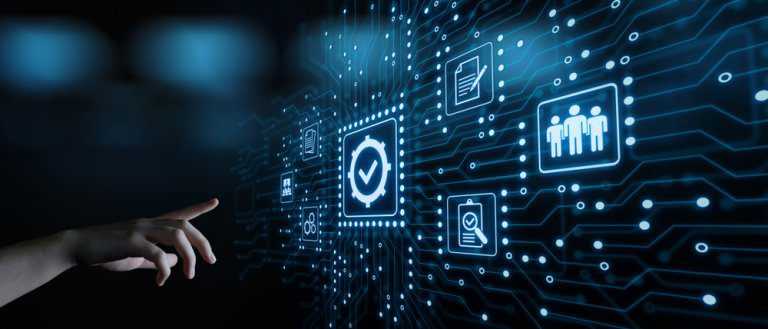
CableLabs participates in more than 30 unique standards organizations, industry consortia, and open source efforts.
CableLabs is focused on developing innovative technologies, not only in the performance of cable’s hybrid fiber coax (HFC) networks, but also in many areas that extend beyond the traditional cable network, including wireless (both licensed and unlicensed), cybersecurity, network function virtualization (NFV), optical technologies for access networks, and the application of artificial intelligence (AI) and machine learning to network management and orchestration. To be successful, CableLabs recognizes that, in these areas beyond traditional cable technology, it must engage and work with the broader technology community to drive advancements. This effort is visible through CableLabs’ deep commitment to leading and contributing to standards organizations, industry consortia, and open source efforts in these broader areas.
Developing standards and industry specifications are at the core of CableLabs, which has been in the specification and standardization business since its inception over 30 years ago. In 1997, CableLabs released the initial version of the Data Over Cable Service Interface Specification (DOCSIS), the technology that enables broadband service to be provided over an HFC network. Standardization of the cable interface specification allowed the cable network operators to work at scale with the network equipment manufacturers to build the interoperable technology needed for cable to meet the exploding demand for broadband Internet access.
Ever since, CableLabs, along with its members and the vendor community, has continued to advance DOCSIS technology. Cable operators today have largely moved to DOCSIS 3.1 technology, enabling the availability of gigabit-speed broadband across nearly the entire cable footprint in the US, and driving towards a “10G” network capability. As cable has broadened its focus, CableLabs has responded by broadening its standards efforts and industry engagement.
Improving Wi-Fi and Enabling 5G through Wireless Standards Engagement
CableLabs contributes significantly to almost a dozen different standards organizations to improve wireless connectivity through standardization related mechanisms. Our work is not restricted to improvements in the traditionally separate spheres of in-home and mobile wireless and includes work toward a seamless network convergence for the future. Along those lines, CableLabs is engaged in the O-RAN Alliance, where we are leading an effort to establish an open virtualized RAN (“radio access network”) fronthaul specification which will allow for low-cost small cells with DOCSIS network backhaul.
At 3GPP, CableLabs is driving the Wireless-Wireline Convergence (WWC) effort to make the operation, management, and traversal of 5G wireless networks and 10G DOCSIS networks more seamless. CableLabs is also working to bring consumers a faster and safer in-home network experience through a next-generation adaptive security platform, CableLabs ® Micronets, which enables enterprise-level smart security at home. Beyond making home networks safer, we’re working to make them more powerful; exhibited by our role in achieving recent milestones with carrier-grade Wi-Fi certification through the Wi-Fi Alliance’s VantageTM and launch of the new EasyMeshTM certification program.
Driving Increased Performance of Optical Technologies in the Access Network through Broad Industry Collaboration
As cable drives its fiber infrastructure deeper into the HFC network, CableLabs has developed new technology for use of fiber in the access portion of the network and has promoted standardization of such technology. We are involved at several global standards development bodies—including IEEE, ESTI, O-RAN, and SCTE where we work to level-up all aspects of the fiber network. These efforts combine our internal specification development— work (such as Coherent Optics specifications) with broad industry collaboration in order to deliver dramatic improvements to the access network across all areas. This means that while working toward ever faster speeds through developing the next generations of PON protocols, the whole network ecosystem needs to be addressed, which includes innovation in network operations with projects such as Proactive Network Maintenance (PNM).
Building a Common, Secure, Foundation for IoT Devices of the Future
CableLabs envisions a future empowered by technologies that improve our lives—a future where augmented reality (AR)/ virtual reality (VR) head-mounted displays, video walls, AI-enabled media, ubiquitous Internet of Things (IoT) devices, light field holodecks and displays (as seen in our latest Near Future video) are just the beginning. However, in order for AR/VR devices to be populated with high-quality content, for video walls to connect seamlessly, or for our IoT devices to assist us securely, we will first need high-quality, secure, industry-driven standards on which the technology and applications can be built. This belief has led to our involvement in the Open Connectivity Foundation (OCF), an industry effort to develop a secure interoperability specification for IoT.
Catalyzing the Future of Immersive Media Experiences
Recognizing the importance of building consensus throughout the ecosystem, even beyond the broadband network, CableLabs is significantly involved in and contributing technical expertise toward a number of emerging technology areas, including significant projects in video, VR/AR, and immersive media. Essential to the actual adoption of standards, we recently played a founding role in establishing Media Coding Industry Forum (MC-IF) to address patent licensing of future MPEG codecs. In addition, we announced a new collaboration called IDEA (Immersive Digital Experiences Alliance) to establish and promote end-to-end delivery of immersive content, including light fields, over broadband networks.
To learn more about our work in standards, open source, and industry consortia please see our members-only (login required) Standards Strategy Update (April 2019) on current engagements.

Policy
The Gigabit Internet Dream Continues to Expand

Cable gigabit service availability continues to expand – as of June 2018, 63% of U.S. housing units – 74% of the cable broadband footprint – had gigabit service or better available from their local cable operator. This is up seven percentage points in just three months and has expanded by 16X in 18 months. Cable is making the gigabit Internet dream a reality. Coincident with this update of the cable industry’s gigabit deployment data, we are also releasing a new installment in our Inform[ED] Insights series that explains the technology that enables these gigabit networks.
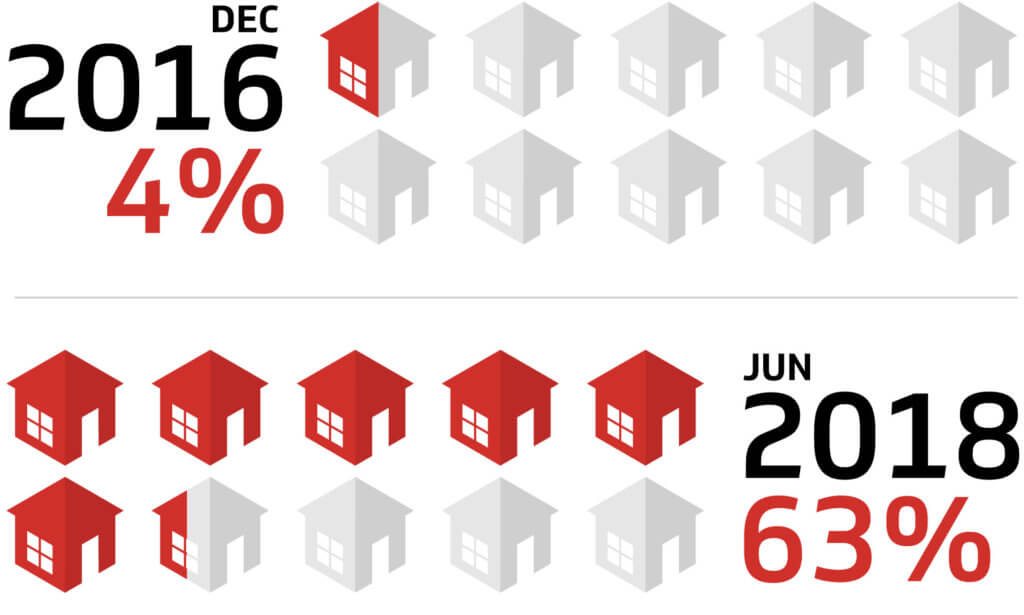
Cable’s deployment of high-capacity broadband networks is enabling the gigabit services of today and the symmetric multi-gigabit services of tomorrow. With the wide availability of gigabit service and beyond, the broadband infrastructure is in place to power emerging technologies that will transform and enhance our lives through immersive entertainment, next-generation healthcare and a reimagination of education and work.
CableLabs and the cable industry are continuing to advance the capacity and performance in each segment of the cable broadband network to remain well-ahead of consumer demand. We are focused on developing innovative network technologies in the areas of coax (e.g., DOCSIS 3.1 and full duplex DOCSIS), fiber (e.g., coherent optics in the access network), and wireless (e.g., Wi-Fi and 5G), as well as defining optimal network architectures to provide the necessary capacity and performance in each segment of the network for today’s gigabit services and those anticipated in the future.
Ready to see how the cable industry is driving gigabit speeds from the lab to the consumer? Click on the link below to download our new Inform[ED] Insights white paper.

Energy
#EEDay2018

Today is Energy Efficiency Day, a collaborative effort of regional and national organizations working to promote energy efficiency. CableLabs has been a strong supporter of energy efficiency for many years and is involved in a number of related initiatives:
CableLabs leads the technical efforts for three highly impactful energy efficiency Voluntary Agreements (VA) in North America:
- The US Set-Top Box Voluntary Agreement (US STB VA)
- The US Small Network Equipment Voluntary Agreement (US SNE VA)
- The Canadian Energy Efficiency Voluntary Agreement (CEEVA) for Set-top Boxes
As an example of impact, the US Set-Top Box VA is estimated to have saved nearly 30 Terawatt hours of energy over the five years it has been in place. This equates to over $3.5 billion dollars in savings for consumers and avoids over 20 million metric tons of CO2 emissions (the same as 4.4 million passenger cars driven for a full year). The industry achieved these remarkable results while rolling out new, innovative features and capabilities such as voice-controlled remotes and 4K video.
CableLabs plays an active role in the SCTE•ISBE Energy 2020 Program, and I have the honor of being a judge in the SCTE•ISBE Adaptive Power Challenge later this month at the SCTE•ISBE Cable-Tec Expo where six finalists will present their innovative approaches to reducing network power consumption.
CableLabs designs energy efficiency into our specifications. As an example, the DOCSISÒ 3.1 protocol considered energy efficiency up front when developing the protocol, and designed DOCSIS Light Sleep (DLS). First generation DOCSIS 3.1 modems being deployed today offer five times the broadband speeds of DOCSIS 3.0 modems using no additional energy.
We are also focused on energy efficiency in our workplace. Our building in Louisville, CO has motion-controlled lighting throughout so that the lights are on only when we need them. We focus on decommissioning and turning off servers and equipment when they are not in use. We have installed eight electric vehicle charging stations at our office and there is constant competition for them. We also provide free bus passes to all our employees to encourage taking the bus whenever possible, and we have community bicycles that employees can use to run errands or simply to take a break and get some fresh air.
CableLabs is excited to promote energy efficiency around the world. Happy Energy Efficiency Day to all! #EEDay2018
How to Learn More
Read the CableLabs Inform[ED] Insights Paper - Energy Efficiency Through Industry Action
Read Energy Blog Topics at CableLabs Blog
Watch the Webinar on the Energy Efficiency Voluntary Agreements
Policy
Legislators at the Labs
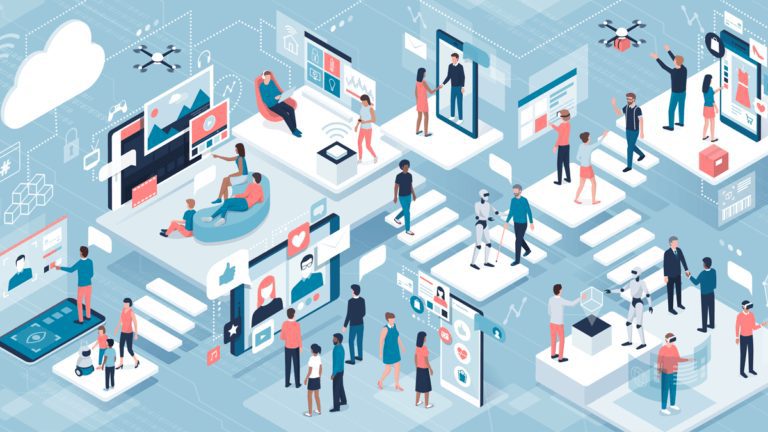
Eighty politicians walked into a lab... That's not the start of a joke, it was actually the start of our week here at CableLabs! We were excited and honored to host state representatives and senators from across the U.S. on Monday, and to show them the exciting innovation happening in the cable industry.
Our day was all about innovating the future of connectivity. We started by talking about the deployment of gigabit networks, which now reach the majority of Americans, and we showed them the research that makes these services a reality over the existing hybrid fiber coaxial networks of the cable industry. We talked about the importance of wireless connectivity and spectrum research, since everyone connects to broadband via Wi-Fi, and a majority of CableLabs' members are also mobile operators. We focused on cybersecurity – an increasingly important area, given the growth of connected (‘IoT’) devices – and what we are doing to help as part of the broader Internet ecosystem. And finally, no visit to CableLabs would be complete without experiencing the applications that ride over gigabit networks – immersive media, virtual reality, and the holographic effects of light fields were a highlight, and are featured in our latest Near Future film.
So, what do you get when you have eighty politicians in the Labs? Lots of questions! How should we think about 5G? What can we do to extend broadband service to areas that don’t have access? How can we realize the educational possibilities that come with broadband?
All great questions, and at a high level, the answer is that there is no one single technology solution. That is why CableLabs is pushing the envelope of performance on cable, fiber, and wireless, and other technologies, bringing next-generation connectivity to consumers.
But, there is a common thread for policymakers: The innovations we develop at CableLabs are all at least three years away from being realized in the market. The policy environment can help to put new technologies into the hands of consumers through stable, predictable, and consistent policy that is conducive to investment and risk-taking. Since there is that interaction between technology policy and innovation, we appreciated the opportunity to host a great group of elected representatives this week.
CableLabs is the global innovation hub for the cable industry and provides leaders across the globe with technology insights on which to base decisions of significance.
To learn more about Rob and CableLabs tech policy work, please click here.
Policy
A Super-Fast, Super-Connected Wireless Future Requires a Balanced Spectrum Policy

This article was originally published by Morning Consult on Aug. 9, 2018. You can find the post here.
Recently, the Senate Commerce Committee held a hearing on the race to 5G, exploring how we can harness the power of wired and wireless broadband to drive transformative communications innovation, and what the government can do to support and accelerate industry efforts. Testimony from a range of ecosystem players – mobile, cable, satellite, and equipment suppliers – made clear that the 5G vision of ultrafast speeds, minimal latency, and expanded coverage across the country will be delivered by a variety of new technologies that will transform our connected lives.
Getting there will require policymakers to unleash wireless bandwidth – the spectrum – that will enable this new world.
At the hearing, industry representatives agreed that the future of connectivity will require access to robust licensed, unlicensed and shared spectrum. Unlicensed spectrum in particular, as Charter Communications Inc.’ Craig Cowden pointed out, will play a key role in the delivery of 5G.
Unlicensed spectrum is open to all and is already intensively used for Wi-Fi, which Americans rely on for broadband access. The central role of unlicensed spectrum will continue in our 5G future, as the growth of Wi-Fi continues and new technologies are developed. It is therefore essential that policymakers include unlicensed spectrum in any 5G discussion, and that Congress and the FCC work to expand this wireless bandwidth.
Wi-Fi and unlicensed spectrum already are central to Americans’ everyday lives. Wi-Fi carries the majority of all internet traffic now, with 3 billion Wi-Fi devices being deployed this year alone. Last year, over 60 percent of all mobile data traffic was offloaded from cellular networks onto Wi-Fi. Internet of Things devices, which will reach over 11 billion this year, rely on Wi-Fi more than any other connectivity technology. It is a ubiquitous element of our modern economy – e-commerce, medical services, transportation and finance, among other sectors, are all dependent on Wi-Fi connectivity.
Wi-Fi added more than $525 billion in economic value to the U.S. economy just in 2017, according to one estimate. In the coming years, Wi-Fi is expected to grow further, offering increased reliability, lightning-fast gigabit speeds, and seamless secure connectivity. The cable industry – including my organization, CableLabs – is working hard to improve Wi-Fi and other unlicensed technologies for consumers in support of the 5G vision.
There is now a specific opportunity to give this innovation a boost through spectrum, in particular, the 5 gigahertz frequency band. Parts of the 5 gigahertz band are already used by Wi-Fi, and it is home to many new wireless innovations. But to fully enable these latest technologies, the spectrum available for unlicensed services in this frequency range must be expanded upward, into the 5.9 gigahertz range. When this happens, industry can and will rapidly put this spectrum in the hands of consumers.
The 5.9 gigahertz band is our country’s best near-term unlicensed spectrum opportunity for several reasons. First, it offers sufficient bandwidth to support wireless innovation through a wide range of technologies and services. Second, since it is an outgrowth of already heavily-used frequencies, it is easily adopted by wireless equipment – a rare opportunity in spectrum allocation, where it usually takes years to get new bandwidth into the hands of consumers. Third, the band is largely unused and has been for the past 20 years. No other spectrum opportunity has fewer existing services to consider.
Having spectrum available that promotes innovation and connectivity is critical to our connected future. Making the unlicensed 5.9 gigahertz frequency band available for new wireless services now would represent one significant step forward in the global race to 5G.
Interested in learning more? Take a look at our Inform[ED] Insights by clicking below.
![Read our Inform[ED] Insights](https://no-cache.hubspot.com/cta/default/1697621/359c20b6-c91f-4f06-865d-68cb97b38db7.png)


